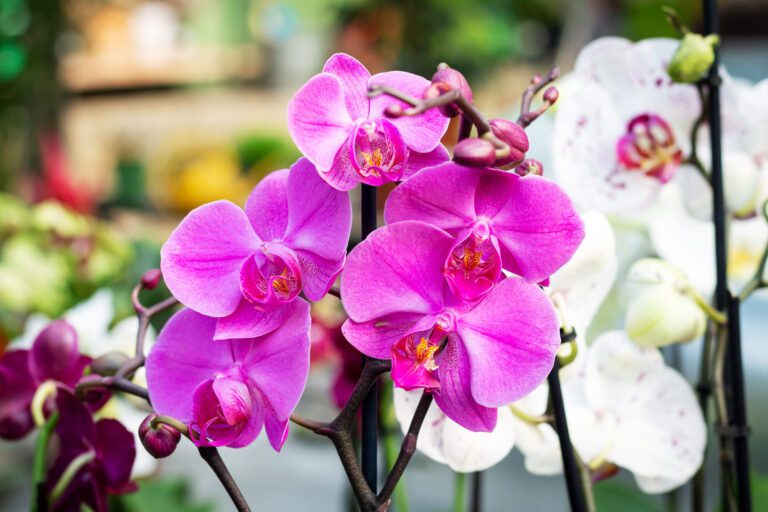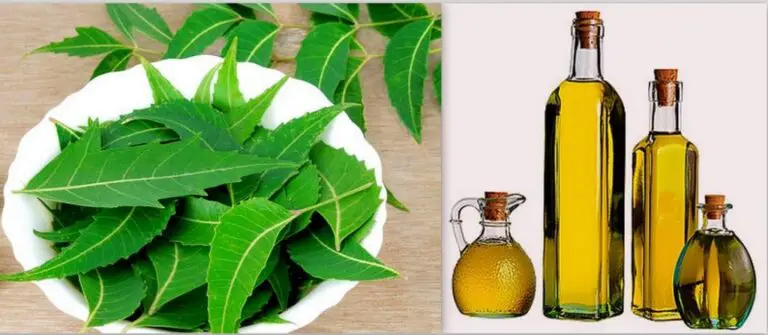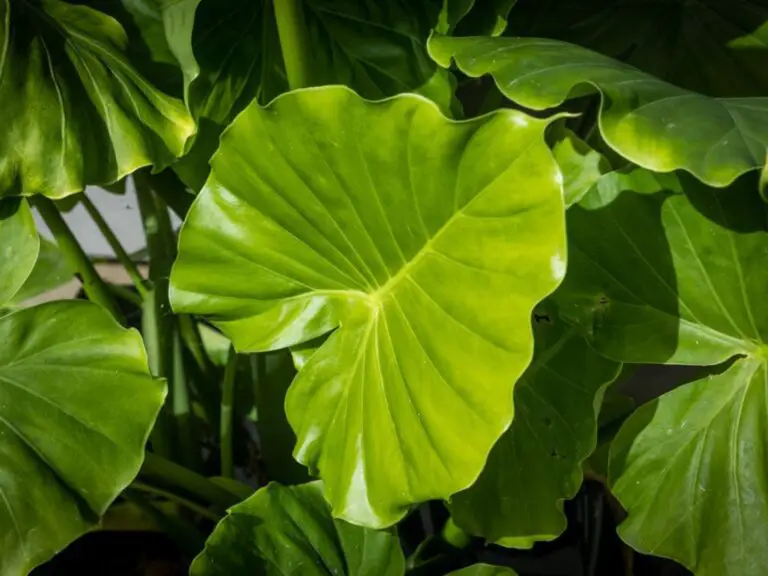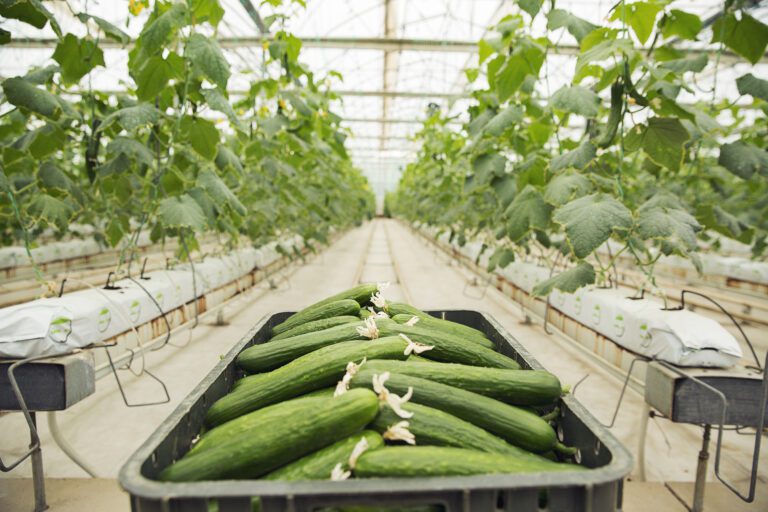Cucumber Allies: 17 Super Companion Plants for Your Cuke Patch
Cucumber Allies
Table of Contents
Benefits of Companion Cucumber Allies Planting
Companion Cucumber Allies planting offers numerous advantages to your garden beyond just aesthetics. By strategically interplanting different species, you can create a symbiotic relationship that enhances the overall health and productivity of your garden. Companion plants can help repel harmful pests, attract beneficial insects, improve soil health, and even enhance the flavor of certain crops like cucumbers. These interactions create a more resilient and diverse ecosystem within your garden, reducing the need for chemical interventions and promoting a more sustainable growing environment.
In addition to the practical benefits, companion planting can also provide a sense of harmony and balance to your garden. By observing nature’s principles of interconnection and diversity, you can create a visually appealing and dynamic landscape that is both functional and beautiful. The interactions between different plant species can create a sense of unity and cohesion in your garden, enriching your gardening experience and fostering a deeper connection to the natural world.

Companion Planting Basics
Companion planting is a gardening technique that involves planting different types of plants together to enhance growth, protect against pests, and improve overall yield. By strategically selecting which plants to grow in proximity to one another, gardeners can create a harmonious ecosystem that benefits all species involved. This practice has been used for centuries and has proven to be an effective way to promote biodiversity and sustainability in the garden.
The concept of companion planting is based on the idea that certain plants can help each other thrive by providing mutual benefits such as pest control, attracting beneficial insects, enhancing flavor, and improving soil health. For example, planting aromatic herbs like basil or dill near tomatoes can help repel pests that commonly affect tomato plants. Similarly, growing legumes like beans or peas alongside corn can improve the nitrogen content in the soil, benefiting all plants in the vicinity. By understanding these symbiotic relationships between plants, gardeners can maximize the health and productivity of their crops while reducing the need for chemical interventions.
Why Companion Planting is Important
Companion planting is a fundamental practice in gardening that involves strategically planting different species of plants together to reap numerous benefits. The importance of companion planting lies in its ability to enhance overall plant health, increase crop yields, and deter pests naturally. By cultivating a diverse ecosystem in your garden through companion planting, you create a balanced environment where plants work together symbiotically, improving soil fertility and reducing the need for chemical interventions. This method not only promotes biodiversity but also contributes to sustainable and eco-friendly gardening practices.
Furthermore, companion planting can help optimize space utilization in your garden, maximize sunlight exposure, and support efficient nutrient uptake among plants. The synergy between compatible plant species can boost each other’s growth, resilience, and productivity, leading to healthier and more vibrant crops. Through thoughtful design and implementation of companion planting strategies, gardeners can harness the power of nature to create a harmonious and flourishing garden ecosystem.
Plants That Help Cucumbers Thrive
Cucumbers are versatile garden vegetables that can thrive even more when planted alongside beneficial companion plants. One such plant is the marigold, known for its ability to repel harmful pests like nematodes that can damage cucumber roots. Additionally, planting dill near cucumbers can attract beneficial insects such as ladybugs and parasitic wasps, which help control common pests like aphids and cucumber beetles. By strategically incorporating these companion plants into your garden layout, you can create a more balanced and harmonious ecosystem that supports the growth and health of your cucumber plants.
Another plant that can greatly benefit cucumbers is the nasturtium. Nasturtiums not only act as a natural pest deterrent due to their strong scent, but they also serve as a trap crop, drawing pests away from the cucumber plants. Furthermore, the trailing nature of nasturtiums can provide ground cover, helping to regulate soil temperature and moisture levels for the cucumbers. By including these complementary plants in your garden design, you can enhance the overall health and productivity of your cucumber crop while minimizing the need for chemical pesticides or fertilizers.
The table below list plants that help cucumbers thrive:
| Companion Plants | Benefits |
| Legumes (Peas, Beans, Lentils) | Fix nitrogen in the soil, don’t compete with cucumbers for resources |
| Corn | Provides structural support for climbing cucumbers, attracts similar pollinators |
| Root Vegetables (Radishes, Beets, Carrots, Garlic) | Grow well alongside cucumbers without interference |
| Select Flowers (Marigolds, Nasturtiums, Sunflowers) | Marigolds and nasturtiums deter pests, sunflowers provide shade |
| Select Herbs (Dill and Oregano) | Dill attracts beneficial insects, oregano acts as a natural pest repellent |
Remember to avoid incompatible companions like potatoes, sage, mint, and melon near cucumbers, as they may compete for resources or be susceptible to similar diseases.
Plants That Deter Pests from Cucumbers
Planting specific companion plants alongside your cucumbers can help naturally deter pests that might otherwise feast on your cucumber plants. For instance, planting marigolds near cucumbers can help repel common pests like aphids, cucumber beetles, and nematodes. Marigolds release a chemical that is known to deter these unwanted visitors, making them a valuable addition to your cucumber patch.
Another plant that can help keep pests at bay is nasturtiums. These vibrant flowers not only add a pop of color to your garden but also act as a natural insect repellent. Nasturtiums are known to attract aphids and caterpillars away from cucumbers, serving as sacrificial plants that prevent these pests from damaging your cucumber crop. By strategically incorporating these pest-deterring plants into your garden layout, you can create a more harmonious and pest-resistant environment for your cucumber plants to thrive.
Here’s a tabular format listing plants that help deter pests from cucumbers:
| Companion Plants | Benefits |
| Marigolds | Emit a strong scent that repels pests such as aphids, beetles, and nematodes. Planting marigolds around the perimeter of your cucumber patch can help keep these pests at bay. |
| Catnip | The volatile oils in catnip are known to deter cucumber beetles. Planting catnip near your cucumbers can help protect your crop. |
| Radishes | Help deter cucumber beetles by emitting scents that repel them. |
| Nasturtiums | Their pest-repellent properties make them effective companions for cucumbers. |
| Onions | Emit scents that confuse cucumber beetles and deter them from garden. |
| Corn | Works by emitting scents that repel cucumber beetles and attracts beneficial insects that prey on the beetles. |
| Dill | Attracts beneficial insects and can help deter pests from cucumbers. |
Remember to strategically plant these companions to create a harmonious garden ecosystem that supports your cucumber crop.
Companion Plants That Enhance Cucumber Flavor
Growing specific companion plants alongside your cucumbers can not only enhance their flavor but also benefit their overall growth. Mint is a great companion plant for cucumbers due to its ability to repel pests like aphids and cabbage worms while imparting a refreshing aroma to the cucumbers. The presence of mint can also deter pests that might otherwise attack the cucumber plants, promoting a healthier crop with a subtly minty twist.
Another beneficial companion plant for cucumbers is dill. Dill not only enhances the flavor of cucumbers but also attracts beneficial insects like ladybugs and parasitic wasps, which help in controlling harmful pests. The strong aroma of dill can mask the scent of cucumbers, making it harder for pests to locate them while adding a unique taste to the harvested cucumbers. By strategically planting dill alongside your cucumbers, you can create a symbiotic relationship that boosts flavor and repels unwanted pests, resulting in a more robust and flavorful cucumber harvest.
How to Design a Successful Companion Planting Layout
When designing a successful companion planting layout for your garden, it’s essential to consider the growth habits and needs of the plants you intend to interplant. Start by selecting companion plants that have similar sunlight, water, and soil requirements as your cucumbers to ensure harmonious growth. For example, pairing cucumbers with sun-loving herbs like dill or basil can benefit both plants as they thrive in similar conditions.
Additionally, think about the spacing and arrangement of your companion plants to maximize their benefits. Tall plants, such as corn or sunflowers, can provide shade and support for cucumbers, while low-growing ground covers like marigolds or nasturtiums can help suppress weeds and retain moisture in the soil. By strategically placing complementary plants together, you can create a balanced and productive ecosystem that promotes the overall health and yield of your cucumber crop while enhancing the beauty of your garden.

Companion Plants That Attract Beneficial Insects
Interplanting beneficial insect-attracting plants among your cucumber crop is a smart way to naturally boost pest control and pollination in your garden. One popular choice is planting marigolds near your cucumbers, as their vibrant blooms attract beneficial insects like ladybugs, lacewings, and parasitic wasps that prey on common cucumber pests such as aphids and cucumber beetles. Additionally, the strong scent of marigolds can deter harmful nematodes in the soil, creating a healthier environment for your cucumber plants to thrive.
Another valuable companion plant for attracting beneficial insects to your cucumber patch is dill. This herb not only serves as a host plant for beneficial insects but also attracts pollinators like bees and hoverflies. These insects play a crucial role in pollinating cucumber flowers, resulting in better fruit set and higher yields. By including dill in your companion planting scheme, you are not only promoting a diverse and balanced ecosystem but also increasing the overall health and productivity of your cucumber plants.
Plants That Provide Shade and Support for Cucumbers
Cucumbers are vining plants that require adequate support to thrive and produce healthy fruits. One effective way to provide support and shade for cucumbers is by planting tall and sturdy companion plants nearby. Corn, with its tall stalks, can offer excellent support for cucumber vines to climb and grow vertically. As cucumbers receive support from corn, they can access more sunlight, promoting better fruit development and overall plant health.
Another beneficial companion plant that can provide shade and support for cucumbers is sunflowers. These towering plants not only offer structural support for cucumber vines but also create a dappled shade that can protect the cucumber plants from excessive heat and sun exposure. The shade provided by sunflowers can help cucumbers maintain adequate moisture levels in the soil, prevent sunscald on the fruits, and create a more favorable microclimate for overall plant growth. By strategically incorporating sunflowers into your companion planting layout, you can enhance the health and productivity of your cucumber plants.
Companion Plants That Help with Nutrient Uptake
When it comes to growing cucumbers, companion plants that aid in nutrient uptake can significantly benefit the overall health and productivity of your cucumber plants. Certain companion plants have the ability to enhance the soil structure and composition, making key nutrients more readily available for cucumber roots to absorb. One such plant is legumes, like beans and peas, which are known for their nitrogen-fixing capabilities. By hosting nitrogen-fixing bacteria in their root systems, legumes can boost the nitrogen content in the soil, which is essential for the healthy growth and development of cucumbers.
In addition to legumes, plants like comfrey and yarrow are also valuable companions for cucumbers as they are deep-rooted plants that can access nutrients from deeper soil layers. These nutrient accumulators bring up essential minerals such as potassium, phosphorus, and calcium from the lower soil levels to the surface, where cucumber roots can easily access them. By incorporating these nutrient-rich companion plants into your garden layout, you can create a more balanced and fertile growing environment that supports the nutrient uptake requirements of your cucumber plants, ultimately leading to healthier and more robust crop yields.
Plants That Improve Soil Health for Cucumbers
In the realm of companion planting, certain plants have shown to be advantageous for improving the soil health needed for cucumbers to prosper. Legumes such as peas and beans are notable for their ability to fix nitrogen in the soil, a vital element for plant growth. By planting legumes near cucumbers, you can enhance the soil’s fertility, promoting better nutrient availability for the cucumber plants.
Furthermore, incorporating marigolds into the cucumber patch can aid in soil health improvement. Marigolds are known for their allelopathic properties, which means they release compounds that can suppress harmful nematodes and soil-borne pathogens. This natural pest control mechanism not only protects cucumbers from potential threats but also contributes to maintaining a healthy soil ecosystem conducive to plant growth.
Here’s a table summarizing plants that improve soil health for cucumbers:
| Plant | Benefit for Cucumbers |
| Nasturtiums | Antifungal properties: beneficial when planted near cucumbers. |
| Garlic | Antifungal and antibacterial: helps improve soil health. |
| Oregano | Antifungal and antimicrobial: enhances soil quality. |
| Chamomile | Antifungal and insect-repellent: supports cucumber growth. |
| Cover Crops | Growing cover crops like clover, buckwheat, or hairy vetch can improve soil structure and increase organic matter content. These cover crops can be grown in the off-season or before planting cucumber seeds. |
| Bush Beans | Excellent companion for cucumbers: enrich the soil by fixing nitrogen, a nutrient cucumber needs. |
| Pole Beans | Also great companions for cucumbers: contribute to soil health by fixing nitrogen. |
Remember to incorporate these plants into your cucumber garden to promote healthy soil and enhance your cucumber crop.
Companion Plants That Repel Common Cucumber Diseases
Planting certain companion plants alongside cucumbers can help repel common cucumber diseases, promoting overall plant health and productivity. Marigolds, for instance, are known for their ability to deter pests and diseases due to their strong scent, which masks the smell of the cucumbers, making it harder for pests to locate them. Marigolds also release chemicals into the soil that can suppress nematodes, microscopic worms that can attack cucumber roots, leading to diseases like root-knot nematode.
Another beneficial companion plant for cucumbers in disease prevention is nasturtiums. Nasturtiums act as a trap crop, attracting aphids and other pests away from the cucumber plants. By drawing pests to themselves, nasturtiums help protect the cucumbers from pest attacks, thus reducing the risk of diseases spread by insects. Additionally, nasturtiums have antimicrobial properties that can inhibit the growth of certain fungi and bacteria that may cause diseases in cucumbers. This symbiotic relationship between nasturtiums and cucumbers not only benefits the plants but also adds a splash of color to the garden.
How to Integrate Companion Plants into Your Garden
When integrating companion plants into your garden, you must consider the specific needs of each plant in terms of sunlight, water, and nutrients. Group plants together based on their requirements to ensure they all thrive harmoniously. Additionally, make sure to choose companion plants that offer complementary benefits to your main crops, such as attracting pollinators or repelling pests. This strategic planning will not only maximize the productivity of your garden but also promote a healthier and more sustainable ecosystem.
Furthermore, consider the growth habits and root structures of different plants when designing your garden layout. Some plants may compete for resources or inhibit the growth of others if not strategically placed. By understanding the interactions between various plant species, you can create a balanced and diverse garden that fosters mutual benefits among different crops. Remember to observe and adapt your planting design over time, as certain companion plants may exhibit unexpected behaviors or responses in different environmental conditions.
When integrating companion plants into your garden, there are several important factors to consider. These factors will help ensure a successful and harmonious garden ecosystem:
| Factor to Consider | Description |
| Plant Compatibility | Choose companion plants that are compatible with each other. Some plants thrive when grown together, while others may inhibit each other’s growth. Research which plants complement each other and avoid combinations that might compete for resources or negatively affect one another. |
| Pest Control | Companion plants can help deter pests. |
| Pollination | Consider the pollination needs of your crop. Some companion plants attracts pollinators like bees and butterflies. |
| Nutrient Exchange | Certain companion plants improve soil health by fixing nitrogen or accumulating nutrients. Examples legumes, Nasturtium. |
| Shade and Support | Use taller companion plants to provide shade for sun-sensitive crops. For instance sunflowers can create shade for other plants. |
| Biodiversity | View your garden as a system of interconnected plants. Diversity promotes resilience and helps prevent pest outbreaks. Mix different plant types to create a balanced ecosystem. |
Companion Plants That Can Be Grown in Containers with Cucumbers
When growing cucumbers in containers, it’s essential to choose companion plants that can thrive in a similar environment and complement the needs of the cucumber plant. Some ideal companion plants for cucumbers in containers include herbs like basil, dill, and cilantro. These herbs not only add flavor to your dishes but also help repel pests that may harm your cucumber plants. Additionally, planting compact varieties of lettuce or spinach alongside your cucumbers can make efficient use of space and provide a diversity of greens for your meals.
Another excellent companion plant for cucumbers in containers is marigolds. Marigolds are known for their pest-repelling properties and can help protect your cucumber plants from common garden pests. Their vibrant blooms also add color and beauty to your container garden. Nasturtiums are another great option as they attract beneficial insects like ladybugs and hoverflies, which can help control aphids and other harmful pests that might target your cucumber plants. By strategically selecting companion plants for your cucumber containers, you can create a harmonious and thriving mini ecosystem right on your patio or balcony.

Companion Planting Mistakes to Avoid
When it comes to companion planting, there are certain mistakes that can hinder rather than enhance the growth and health of your plants. One common mistake to avoid is planting companions that compete for the same resources. For example, placing two plants with shallow root systems together can lead to both struggling to access nutrients and water in the soil. It’s important to select companion plants that have complementary needs and growth habits to ensure they can coexist harmoniously.
Another mistake to steer clear of is overcrowding your garden with too many companion plants. While it may be tempting to fill every available space with different companions, overcrowding can lead to increased competition for sunlight, water, and soil nutrients. This can result in stunted growth and poor overall health for your plants. Prioritize quality over quantity when selecting companion plants and give them enough space to thrive and support each other effectively.
To Know More About Companion Plants For Your Cucumber, Watch This Video!
Can companion planting really help improve the health and yield of my cucumber plants?
Yes, companion planting can provide numerous benefits for cucumbers, including attracting beneficial insects, repelling pests, enhancing flavor, improving soil health, and more.
What are some common mistakes to avoid when practicing companion planting with cucumbers?
Some common mistakes to avoid include overcrowding plants, planting incompatible companions, neglecting to consider the needs of each plant, and failing to rotate companion plants each season.
How can I ensure that my companion planting layout is successful?
To design a successful companion planting layout, consider the specific needs of your cucumber plants, choose companions that complement rather than compete with them, and rotate companion plants each season to prevent nutrient depletion.
Are there any companion plants that can help prevent common cucumber diseases?
Yes, there are companion plants such as marigolds, nasturtiums, and dill that can help repel common cucumber diseases like powdery mildew and downy mildew.
Can companion plants be grown in containers along with cucumbers?
Yes, there are several companion plants that can be grown in containers with cucumbers, such as herbs like basil and oregano, as well as flowers like calendula and nasturtiums.






